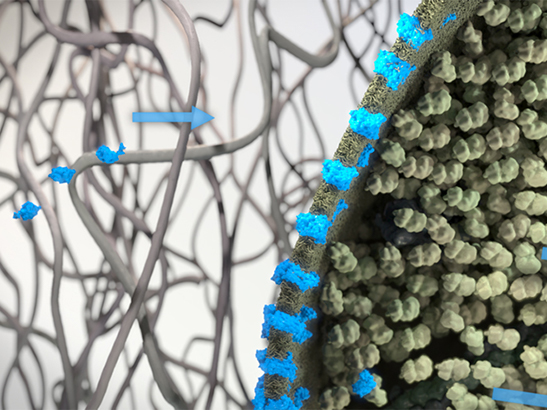Scientists at The Institute of Cancer Research, London, and the Cancer Research UK Manchester Institute based at The University of Manchester have found that healthy cells are persuaded to release unique growth signals which cancer cells can use to multiply but cannot secrete themselves.
Here, we look at the process behind this phenomenon in more detail, using the images and video below, which are courtesy of Dr Chris Tape and Phospho Biomedical Animation.
1. You are seeing two cells, side by side: on the left, a cancer cell; on the right, a healthy cell.
2. Inside the cancer cell is the protein product of a mutated KRAS gene (seen here in purple).
3. Normal KRAS makes occasional signals that tell a cell to divide, but when mutated the gene becomes hyperactive and helps drive cancer cells’ rapid and uncontrolled growth.
The signals are seen here as orange arrows. This is called ‘cell-autonomous signalling’.
4. But mutated KRAS also send signals outside of the cancer cell.
These signals reach the healthy cells and change their behaviour, turning them into cancer’s allies. This is called ‘non-cell-autonomous signalling’.
5. New research shows that the healthy cells are persuaded to release unique growth signals (seen here in red) which cancer cells can use to multiply but cannot secrete themselves.
This new message doubled the capacity for KRAS to drive malignant behaviour in the cancer cells.
The study showed for the first time that there is a communication loop with a mutant gene controlling cancer via healthy cells. This is called ‘reciprocal signalling’.
Now, watch the full video about the process below.
